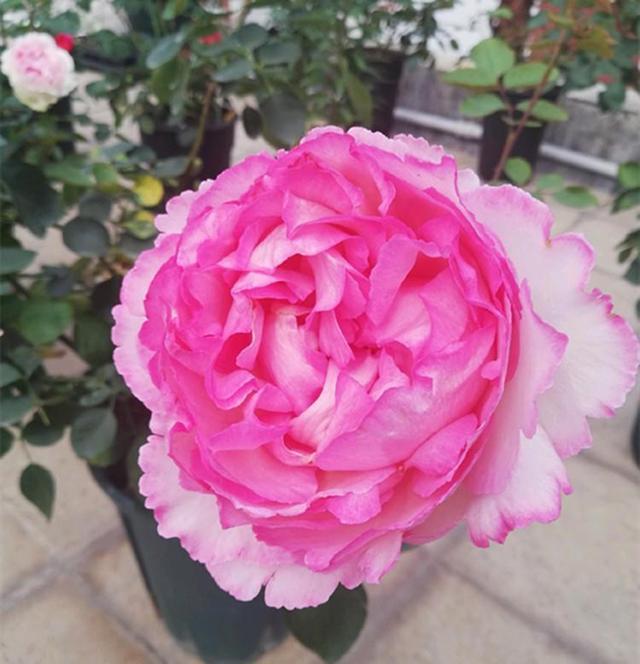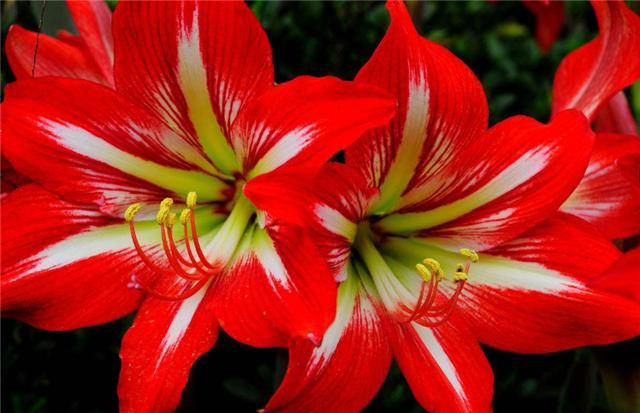Potted jasmine makes it eat good soil and grow quickly.

Jasmine, is a typical acid-loving flower, in the long-term growth process, need to constantly absorb acidic components in order to grow strong and bloom exuberantly. So, how can this acid flower friend guarantee it? Soil, potted jasmine, only let it "eat" good soil, not only grow rapidly, but also blossom all over the tree.
Because jasmine grows in the loose soil rich in humus in the country of origin, the soil is slightly acidic, so when jasmine is cultivated in a large area in the open field, flower friends must avoid sticky and poor drainage. Sandy loam with strong water content and rich humus should be selected. Places with plenty of sunshine to the south or southeast of the terrain are the best, and mountains and flatlands can be planted.
As for the soil of potted jasmine, it needs to be prepared by flower friends. The ideal pot soil prepared artificially should have sufficient nutrient content, complete fertilizer content, good drainage, and the topsoil does not crust and does not crack when dry. The soil is loose and rich in humus, which makes the soil rich in water retention and fertility.
The specific preparation method of cultivated soil is as follows: 2 parts of rotten leaf soil, 2 parts of peat soil, 4 parts of sandy loam soil and 2 parts of river sand, and then put in an appropriate amount of rotten chicken manure granulated fertilizer, which can be used in a basin after full mixing. The amount of chicken manure fertilizer applied should not exceed 5% of the volume of culture soil in the basin at most. Excessive root burning can easily lead to yellowing of branches and leaves and poor growth of the whole plant.
Why prepare such soil for jasmine? Because sandy loam is a kind of sandy soil. This kind of soil has a certain degree of stickiness and can preserve water and fertilizer. Peat soil is a kind of dark brown soil formed for a long time in swamp lowlands. This kind of soil is easy in texture, good in water and fertilizer conservation, and rich in humus and acidic. In addition to fixed fertility, rotten leaf soil mainly plays the role of loosening soil.
Therefore, when these three kinds of soil are mixed with river sand, they not only have a certain degree of fertility, but also have loose texture, conserve water and fertilizer, and supply the needs of jasmine plant growth. If you don't want to mess with the flower friends, you can also use the general nutrition soil of flowers instead.
In order to make the fertility of the cultivated soil lasting, but also to topdressing jasmine in the maintenance process, topdressing generally recommends the use of liquid organic fertilizer commonly used in flowers, once a week, diluted 500 times to water the root. If you encounter jasmine yellow leaves, you can also use them alternately with ferrous sulfate. If jasmine is preserved in this way, the plant can constantly absorb nutrients, and the jasmine can flourish and blossom more and more fragrant.
- Prev

Soybeans are used to raise rose and blossom many times at a time.
Soybeans, flower friends are no stranger, is a highly nutritious thing, usually can be used to make soybean milk. On the other hand, soybeans are still a thing of "full ability" in raising rose. If you use it once, you can blossom many times. 1 、...
- Next

Zhu Dinghong, who blossoms three times a year, reluctantly tells the truth.
A flower friend's double scarlet red is very beautiful, and then can not help but ask him about the maintenance skills, everyone knows that Zhu Dinghong usually blossoms only once a year in summer, but this flower friend's Zhu Dinghong can open three times a year, let people in.
Related
- Wuhan Hospital Iron Tree Blooming Result Was Instantly Frightened by the Gardener Master
- Which variety of camellia is the most fragrant and best? Which one do you like best?
- What is the small blue coat, the breeding methods and matters needing attention of the succulent plant
- Dormancy time and maintenance management of succulent plants during dormancy
- Minas succulent how to raise, Minas succulent plant pictures
- What are the varieties of winter succulent plants
- How to raise succulent plants in twelve rolls? let's take a look at some experience of breeding twelve rolls.
- Attention should be paid to water control for succulent plants during dormant period (winter and summer)
- Watering experience of twelve rolls of succulent plants
- Techniques for fertilizing succulent plants. An article will let you know how to fertilize succulent plants.

